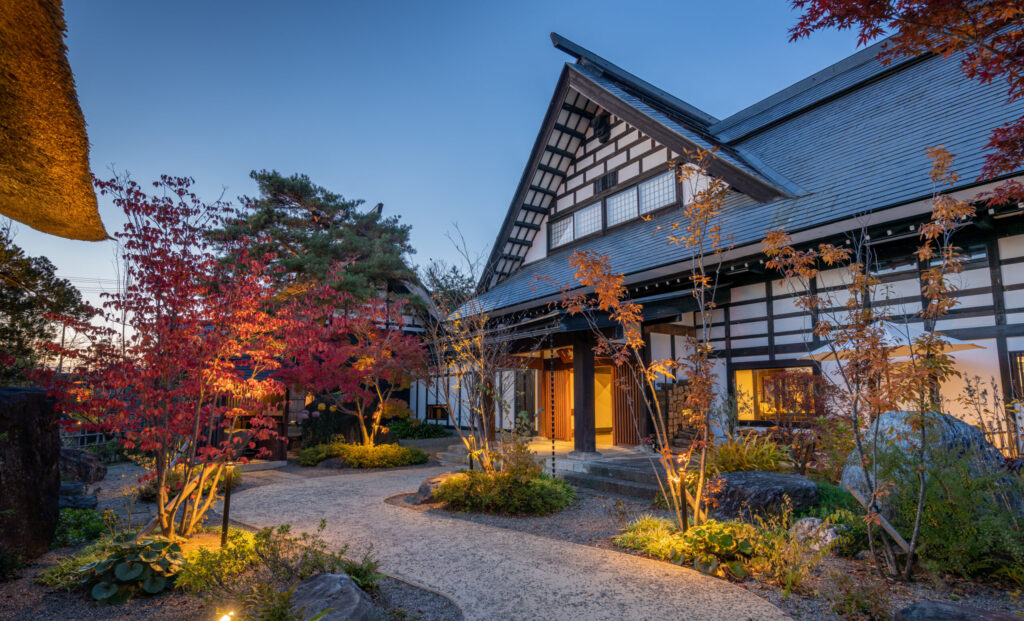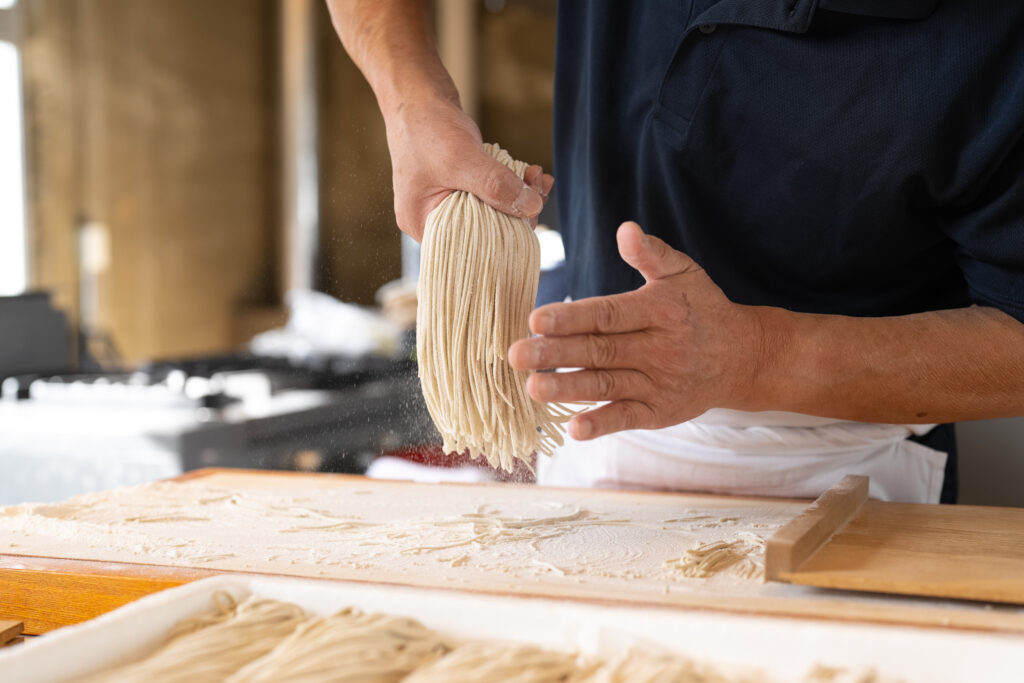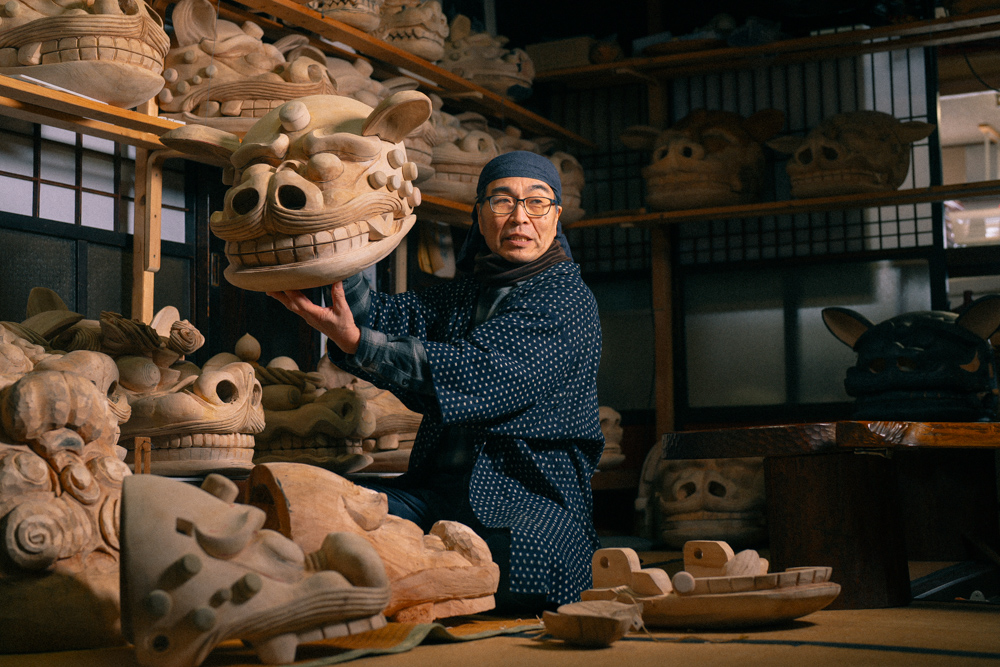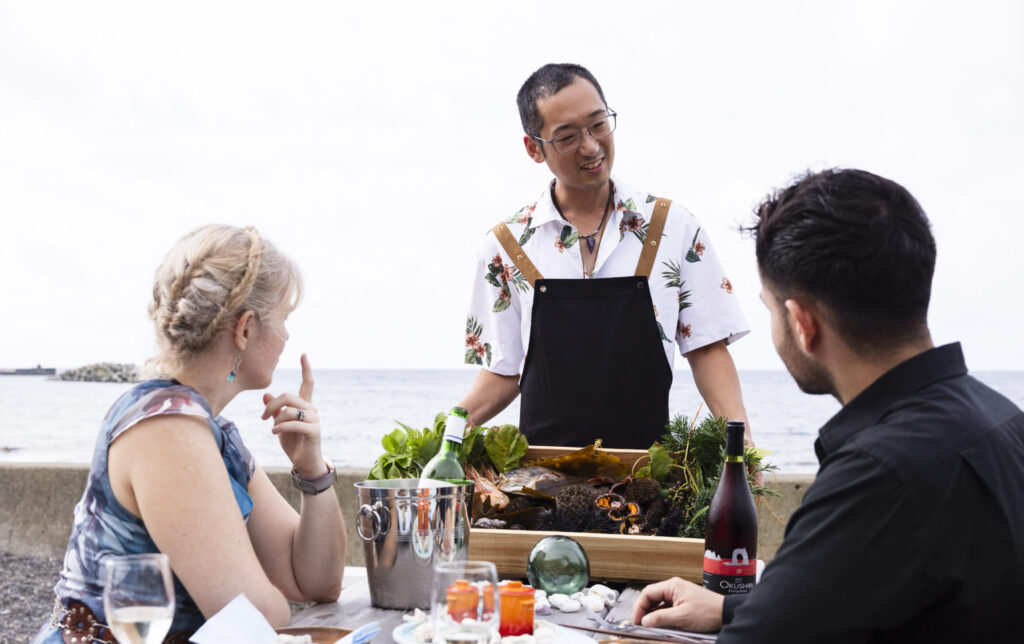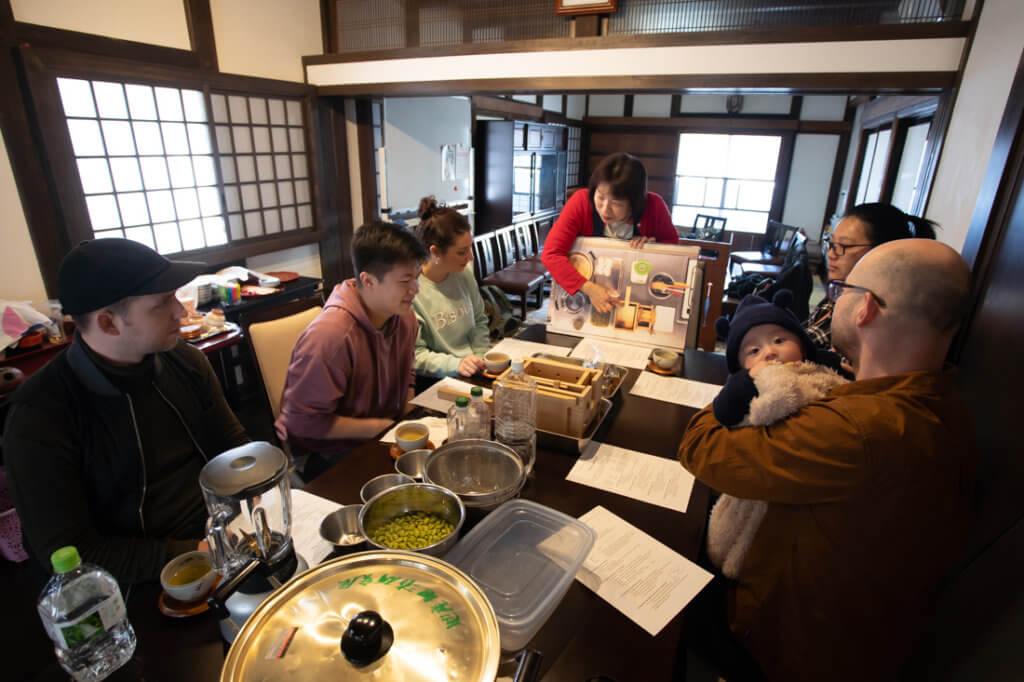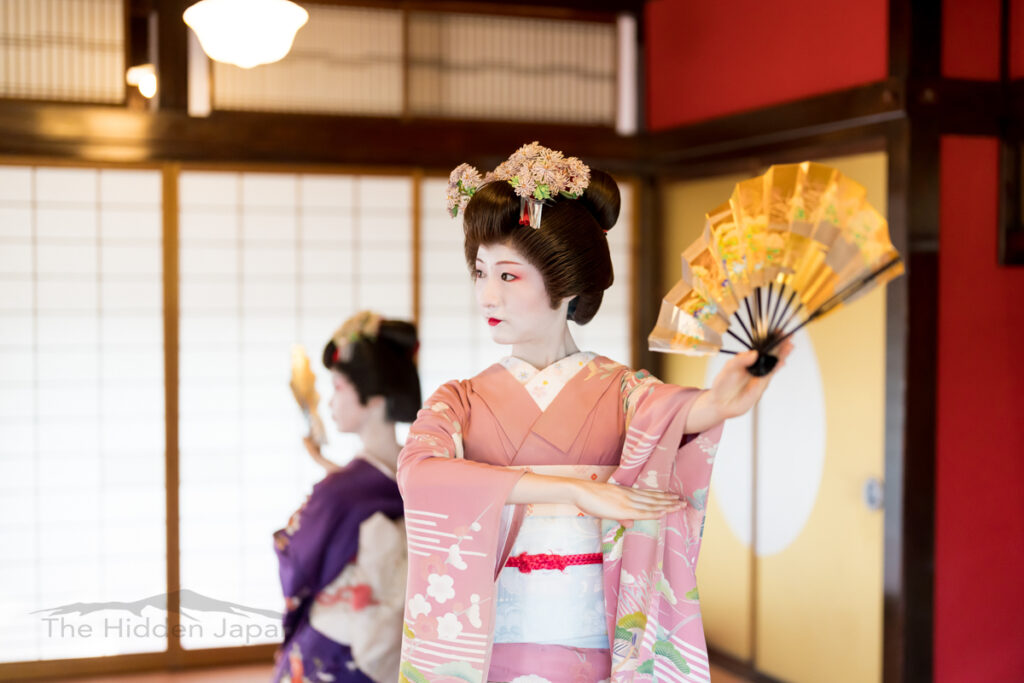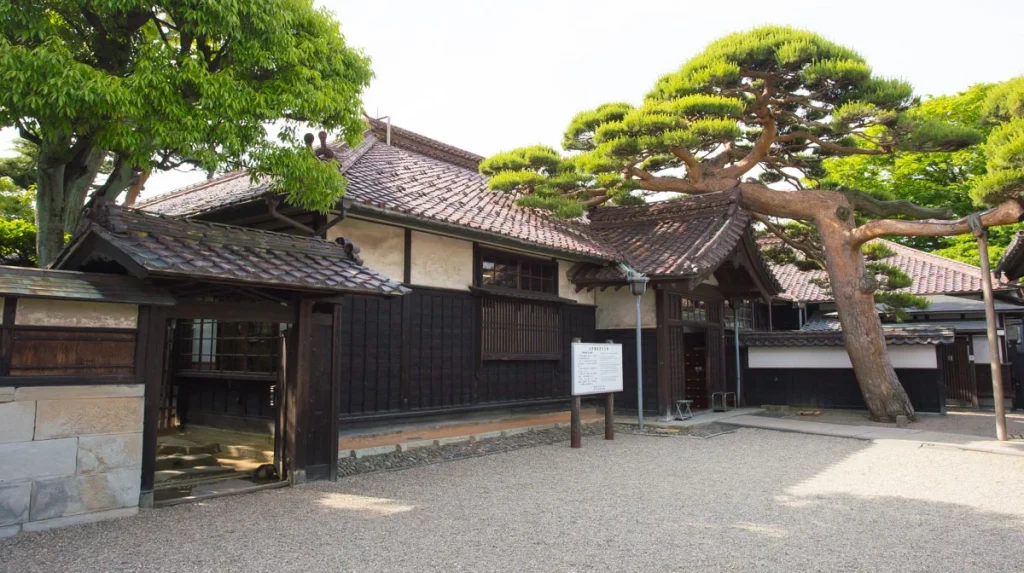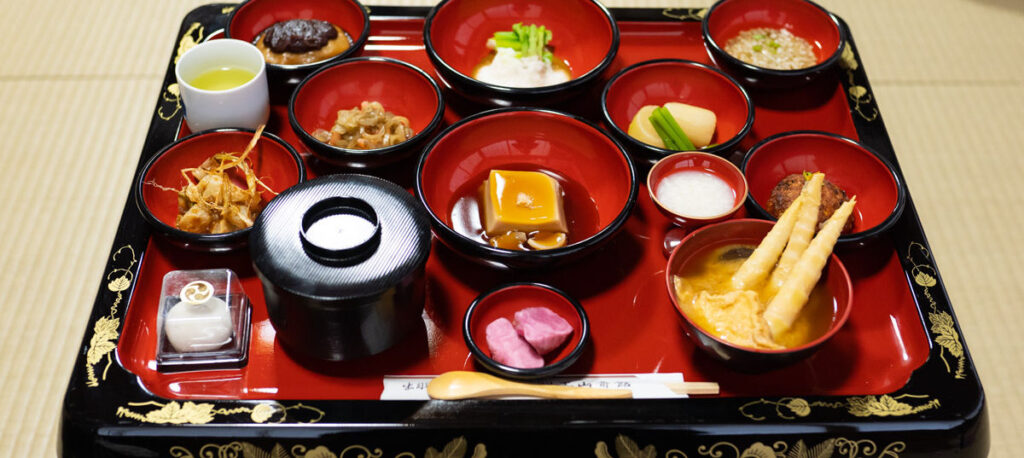
Yamagata Prefecture
Discover the unrivaled culture and deep history of the port city of Sakata, once home to the richest family in all of Japan.
Sakata City on Yamagata Prefecture’s north-western coast is famous for flourishing as a merchant town since the 1600s. Sakata was home to the once richest family in Japan, the Honma family, who became rich by trading safflower and rice with Edo (modern-day Tokyo) on the Kitamaebune ships from the 1600s.
Let us take you on a walk through 500 years of history and culture in the Japanese port city of Sakata, starting with the center of operations for what was once one of Japan’s premier shipping families.
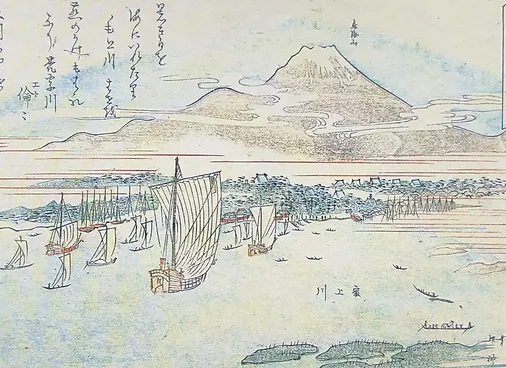
The Historical Abumiya Residence
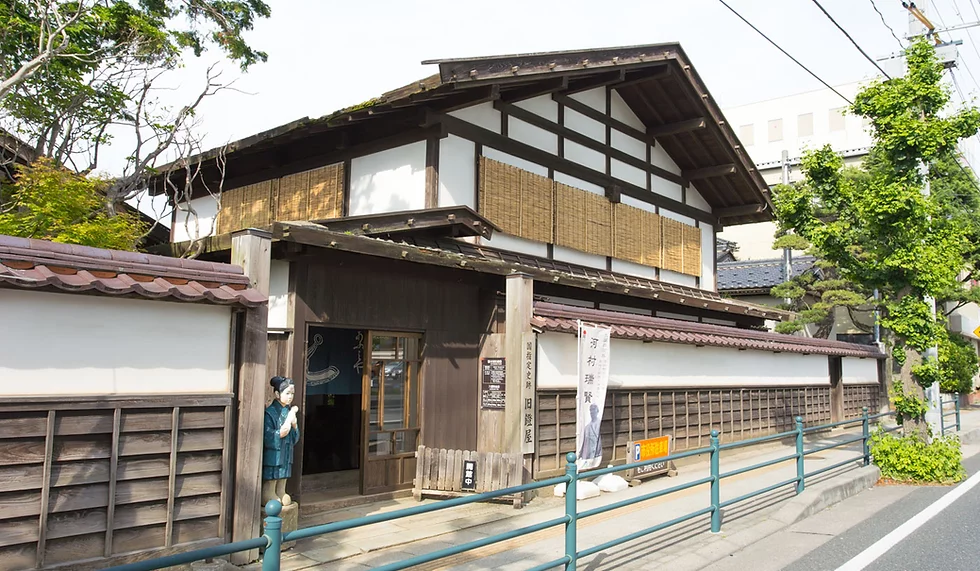
Our tour of Sakata begins right in the city center with The Historical Residence of Abumiya, one of the top shipping agents and rice dealers that benefitted greatly through trade on the Kitamaebune ships.
The building has been restored and exhibitions are on display that recreates life for the merchants, with rooms such as the office for balancing accounts, and the warehouse for keeping goods stored safely away from the elements. Of note are the dirt floors and the stone-weighted roof, architectural features that are typical of the time.
Cost
¥1000 entrance fee
Opening Hours
9:00am to 5:00pm
Average Duration
1-2 hours
Address
99701206 Yamagata-ken, Tsuruoka-shi, Imaizumi, Okubo-657-1
Honma Historical Residence
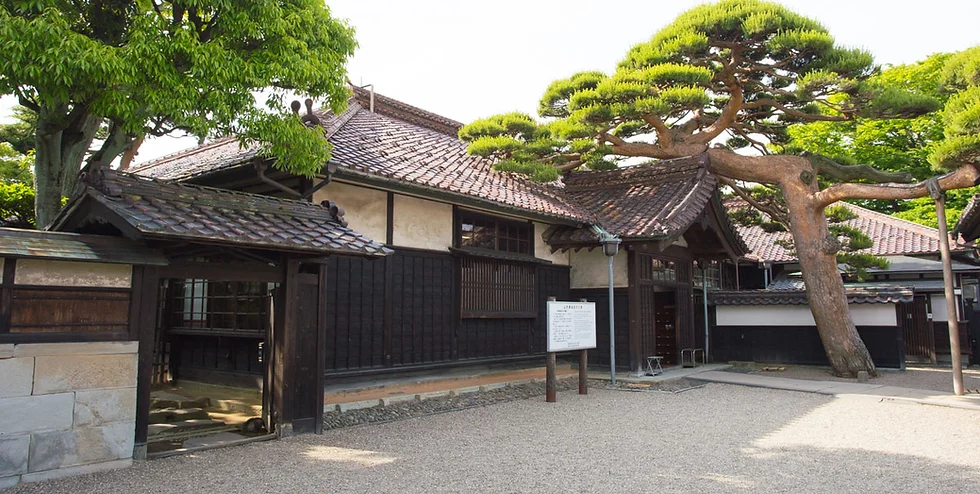
Take a left when you leave The Historical Abumiya Residence and walk about 300m where you will find the former residence of the richest family in Japan, The Historical Homma Residence. The Homma family amassed enormous wealth by selling produce from their large amounts of farmland on the Kitamaebune ships, yet they still understood the importance of living humbly in comparison to the samurai class.
Nowhere else is this more evident than in their former residence split into two main sections, that for the visiting samurai class originally built in the samurai style in 1768, and the Homma family section added in 1813 with merchant-style architecture, which also included the servants’ quarters. See if you can figure out which is which.
Cross the road from the main entrance of the Historical Honma Residence and you will find a souvenir shop along with some interesting artifacts from the family business such as abacuses, contraptions for storing old coins, and photographs of the surrounding region from many years ago.
Cost
¥1000 entrance fee
Opening Hours
9:00am to 5:00pm
Average Duration
1-2 hours
Address
99701206 Yamagata-ken, Tsuruoka-shi, Imaizumi, Okubo-657-1
Sankyo Rice Warehouses
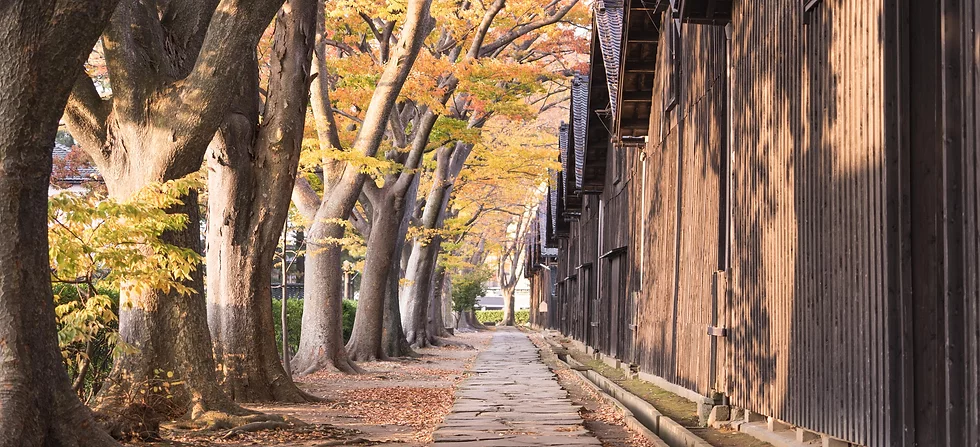
At the nearest traffic light to the Homma Historical Residence, you will find a stone-paved footpath. Follow this path down and it will take you across the river to the Sankyo Rice Warehouses, an iconic symbol of Sakata city.
Firstly, walk around the back and along the glorious row of Zelkova trees. These trees were purposely planted when the building was constructed in 1893 to provide much-needed shade in the summer, and the distinctive gap between the walls and roof provides ventilation for the rice throughout the year.
Once down at the city end, follow the building around and you will see the Shonai Rice History Museum (¥300) full of relics from a time gone by, where you can see exhibitions on rice planting before modern machinery. If you head back to the main entrance, you will come across exhibitions and souvenir shops inside the main building, and another museum showing famous local artwork and carpentry from the city’s time as a major port in the country. Here all manner of Sakata souvenirs can be bought, from traditional arts and crafts to finely-crafted wooden goods to a large variety of local delicacies, including of course Japanese sake from the area.
*If you’re on foot or pressed for time, it might be best to skip The Sankyo Rice Warehouses because they are a bit out of the way.
Cost
Free! (Or ¥300 for the Shonai Rice History Museum.)
Opening Hours
9:00am to 6:00pm
Average Duration
30-45 minutes
Address
998-0838 Yamagata-ken, Sakata-shi, Sankyomachi, 1 Chome−1−8
The Sanno Club
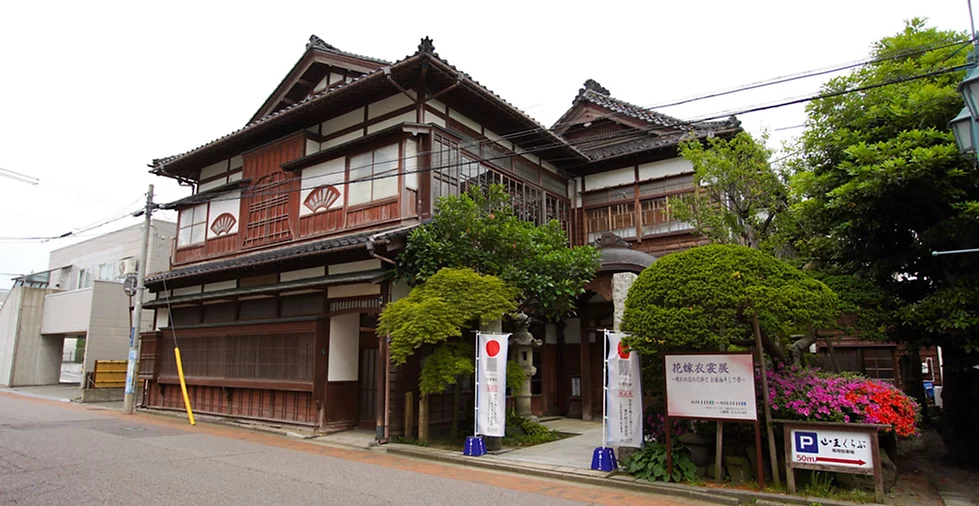
From the museum, follow the river back to the city center and cross the bridge. Take a left at the lights as you follow the road along the river and into the port area. You should see a log house at the third set of traffic lights. Follow this road up the hill about 350m and you will find the Sanno Club on your right.
The Sanno Club is in the buildings of a former Maiko and Geisha house and restaurant named Uhachiro that was built in 1894. This is the ultimate place to check out and even make Kasafuku ornaments, miniature charms sewn together that hang from striking red umbrellas, and explore the history of the Japan Heritage Kitamaebune Ships that brought much prosperity to the city from the 1600s in the downstairs museum. Souvenirs such as the Kasafuku ornaments are on sale in the ground floor souvenir shop (first floor in Japan).
Cost
¥310
Opening Hours
9:00am to 5:00pm
Average Duration
30-45 minutes
Address
998-0037 Yamagata-ken, Sakata-shi, Hiyoshicho, 2 Chome−2−25
Somaro Maiko Teahouse and Hina Doll Gallery
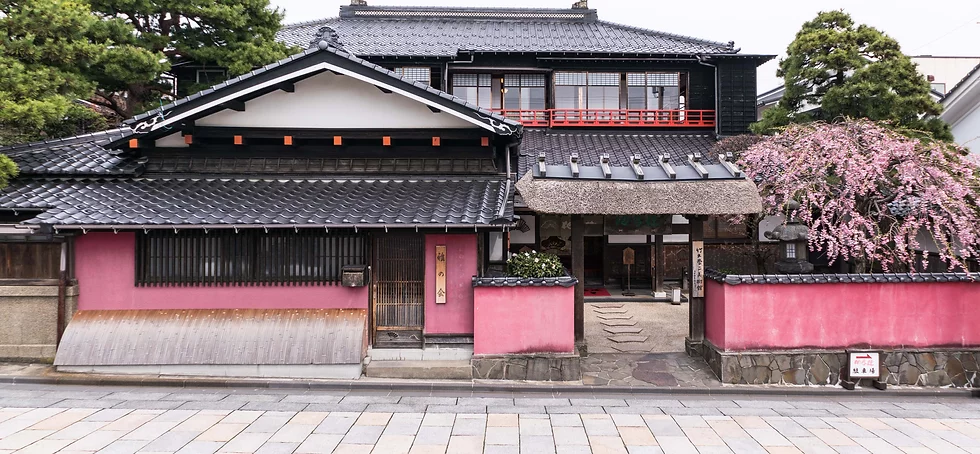
From the Sanno Club, Somaro Maiko Teahouse and Hina Doll Gallery is a short two-minute walk up the hill to the second street on the right. Walk down this street about 10 meters and Somaro will be on your right.
Make sure to be at Somaro Maiko Teahouse and Hina Doll Gallery by 2pm to see the Maiko performance (alternatively, lunch from 12 at Somaro is also available with online bookings). Like the Sanno Club, Somaro is also a converted restaurant with accompanying Maiko and Geisha House but has been modernized and fitted with artworks and photographs by famous artists such as Takehisa Yumeji, and traditional Japanese Hina dolls. We highly recommend grabbing a green tea and complimentary sweet as you sit down outside the garden and take in the architecture and aesthetic of the former restaurant.
Cost
¥1,000 for general entry
General entry + Maiko performance bookings can be made here.
Opening Hours
10:00am to 5:00pm
Closed Wednesdays
Average Duration
30-45 minutes
Address
998-0037 Yamagata-ken, Sakata-shi, Hiyoshichō, 1 Chome−2−20
Hie Shrine and Hiyoriyama Park
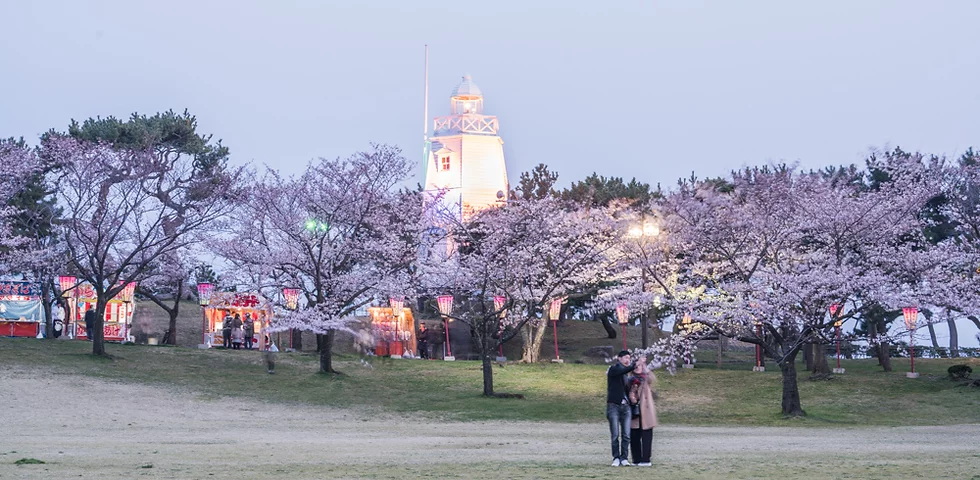
Head right once you leave Somaro and follow the steps up to the Hie Shrine, Sakata’s premiere shrine. Pay your respects here, then head out the entrance opposite the main shrine building. Take a right and you will see Hiyoriyama park on your left.
This park has a lookout over the port, one of the oldest wooden lighthouses in Japan, a Sengoku ship that sailed the Kitamaebune sea routes, and a great big field for playing on.
Cost
Free!
Opening Hours
All year round
Average Duration
30-45 minutes
Address
998-0063 Yamagata-ken, Sakata-shi, Minamishinmachi, 1-10
From being home to the richest family in the country, with a Kyoto-Esque culture of its own and food to die for, the port city of Sakata is one of Japan’s most historically significant ports.
Take the time to stroll around the city and learn about the history that made this place so unique. If you have more time to spare, and perhaps a bike or car, the nearby Ken Domon Museum of Photography, the only photography museum in the world dedicated to an individual, and the Homma Museum with adjacent Seienkaku Villa and Kakubuen Gardens also come highly recommended.
The area is a great way to see how the elite samurai class lived from the 1800s onwards to those interested in history. Or, if you’re up for it, why not take a trip to the tallest waterfall in Yamagata Prefecture, Tamasudare Falls, part of the prefecture with the most waterfalls in the whole of Japan!

